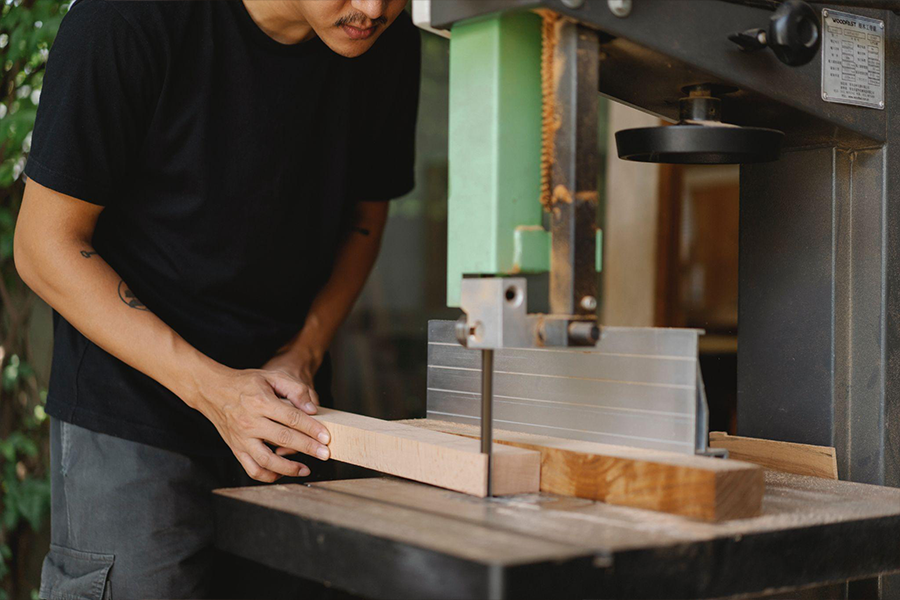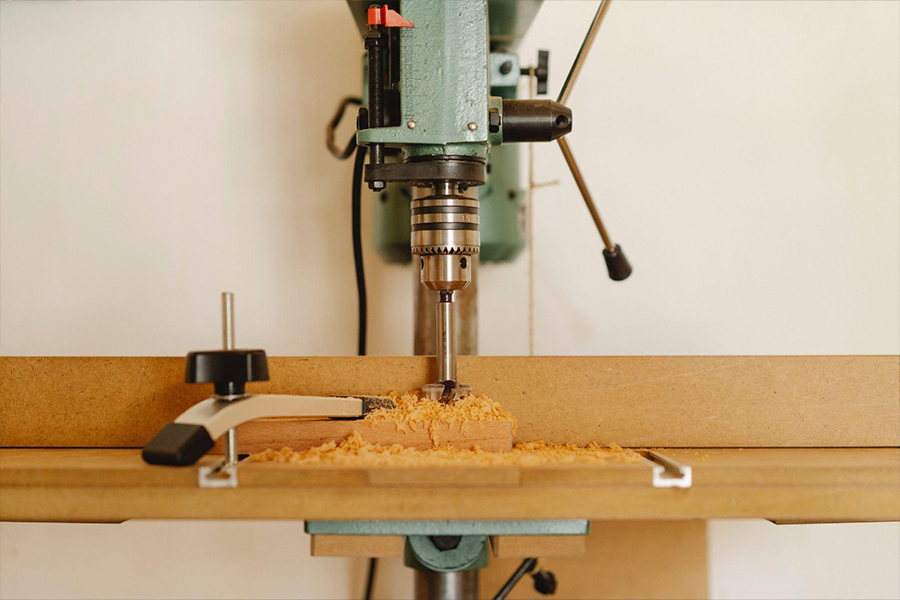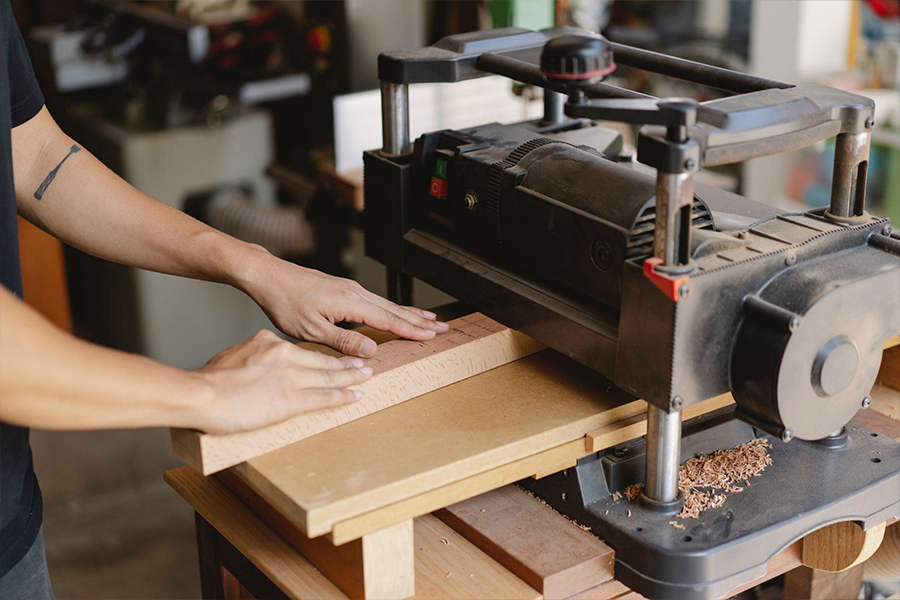Woodworking is a fascinating industry to learn about. After all, woodworking businesses are responsible for the chairs everyone sits on, the tables used in offices, and numerous other applications. To make that possible, the finest machinery is required to make these finely finished products.
This article will cover the essential machinery required for woodworking and also various points to consider before selecting the right woodworking machinery.
Table of Contents
Woodworking industry: market overview
Factors to consider before selecting woodworking machinery
Types of machinery needed for woodworking
Conclusion
Woodworking industry: market overview
In 2020, the global woodworking machinery market size was valued at around USD 4.53 billion. Despite the recent global impact of lockdowns, the market is still expected to grow significantly at a CAGR of 3.9% between 2021 and 2028.
This is not surprising considering how important the woodworking industry is to developing furniture, beams, and other products. As a result, there is still a huge demand for machinery that helps woodworking businesses be more efficient and increase their output significantly.
Factors to consider before selecting woodworking machinery
Specific requirements
First and foremost, the function of the woodworking machinery should meet the specific woodworking requirements. For instance, if a workshop is starting out with smaller projects, they are better off investing in beginner tools like a circular saw, miter saw, impact driver, and the drill machine.
On the other hand, if it is a larger workshop with big projects that concerns the preciseness of the product’s shape and size, then they are better off investing in larger machinery.
New or used machinery
There are advantages to buying either new or used-up woodworking machinery. For instance, second-hand machinery can provide bargain deals—especially with old-fashioned woodworking machinery that still does its job to perfection.
On the other hand, new machinery—optimized with the latest tech—can be useful in big projects and save the business on some additional costs down the line.
Workshop space
Space in a workshop is also an important factor to consider. If it is a smaller workshop with limited spaces, smaller or hand-held woodworking machinery is more convenient.
However, if the workshop size is big enough with lots of available space, big industrial woodworking equipment like the table saw or jointers can be easily accommodated.
Operation and maintenance
Businesses would prefer to select woodworking machinery that is easy to use by one or few people. Having a tool that makes it easier for the user to operate and perform its essential function would be right up the priority for buyers. It saves them time from training their employees and makes the machinery easy to maintain for a long period.
Budget
Budget is another important point to consider when selecting the right woodworking machinery. Even though most woodworking tools can be expensive, there are bargain deals to be got at especially when targeting old machinery. However, quality stands out to be the main priority for big industries so the price factor would not naturally hinder the business’s buying decision.
Businesses with less budget would naturally invest in old-fashioned and classic woodworking machinery while businesses with more budget would invest in machinery with the latest technology embedded in them.
Working productivity
Undoubtedly, one of the biggest uses of these woodworking tools is to save the time and hassle that manual labor would suggest normally. The best woodworking machinery and tool combinations help in performing efficient cuts.
For example, using both a planer and a jointer can help in increasing productivity and make wooden surface edges flat and parallel.
Applicable material
Lastly, ensure that it is an appropriate tool that can be used for the purpose alone. For instance, for making long rough cuts, a table saw is applicable. However, to make more intricate cuts and form patterns in the lumber, a router is more applicable in this scenario.
Types of machinery needed for woodworking
1 Table saw
Table saws are top-notch and one of the most essential tools needed in any woodworking workshop. It is the bread and butter of wood cutting. It mainly consists of a circular saw attached under a table and the blade angled upwards.
A table saw can assist in cutting large pieces of wood by pushing the wood across the table. The motor makes the blade spin at a high frequency, thus, giving a clean cut. An ideal table saw is one that allows woodworkers to adjust the height of the table saw blades so they can cut different thicknesses of wood inserted across the table.
2 Band saw

A band saw is similar to a table saw but it is used to cut into hardwoods with accurate cuts. Although its design does not complement cutting large blocks of wood, it is a versatile tool used for different wood-cutting operations.
Its compact size makes it efficient for making intricate straight and curved cuts.
3 Drill press

A drill press assists in drilling intricate holes into blocks of wood. It is so powerful that it can punch holes through different thicknesses of wood with its downward movement.
The purpose of having a drill press is to restrict the wood from moving or the drill from turning so that it drills an accurate hole in the wood. As a result, this saves time from the manual work of holding the wood still and drilling any inaccurate holes.
4 Jointer

Jointers are used for cutting the edges of the wooden board to make a flat surface. Similar to an edge banding machine, a jointer can give that square edge by sliding the wood through the infeed table, the helical blade head, and the outfeed table.
A typical jointer can make very precise small cuts to form that smooth and straight surface.
5 Planer

To complement a joiner, a planer is used as well. It is mainly used for flattening the surfaces of the wood to make them parallel. By removing some of the thickness of the wood, a planer assists in leveling the wooden surface.
It is easy to use by simply passing the wood through the cutting blades so it shreds small parts of the wooden surface. As mentioned earlier, it usually goes best together with a jointer to perform straight angles around the corners.
6 Router
<alt=“Craftsman using vertical router”>
The router is probably the most sophisticated woodworking tool to use out of the list but an important one. They are versatile and used for making precise cutouts, cutting patterns, and sharp edges for diverse furniture, window frames, cabinets, etc.
A CNC router (Computer Numerical Controlled) utilizes a computerized program to orchestrate high-speed cuts according to various cutting designs inputted into the computer.
7 Wood crushers
<alt=“A yellow wood crushing machine”>
A wood crusher is mainly used to crush wood and other agro stalks into smaller pieces—making it a useful tool to make beautiful products. It removes unwanted waste left by scraps, branches, etc. Its design makes it compact and produces less noise compared to other woodworking machines.
8 Wood-based panel maker
<alt=“Array of wood-based panels”>
Wood panels are important for making products look visually pleasing and provide suitable insulation. To craft clean wood-based panels, a wood panel maker helps in trimming edges and shaping wood into appropriate panels.
9 Wood lathe
<alt=“Operator using old lathe machine”>
A wood lathe machine is used to sculpt the wood into desired shapes. It is mainly used in forming cylindrical items such as baseball bats, lamp posts, bowls, and legs belonging to furniture items.
It is easy to use and when it comes to its accuracy and speed, the CNC lathe offers more benefits than a traditional wood lathe machine.
Conclusion
Woodworking machinery can vary based on the woodworking business’s size and specific requirements. They often use a mix of smaller machinery like circular saws and miter saws to heavy machinery like table saws and band saws. Nevertheless, it is best to source woodworking machinery for small-to-medium sized workshops or woodworking businesses well in advance so that they can carry out a smooth woodworking workflow.




